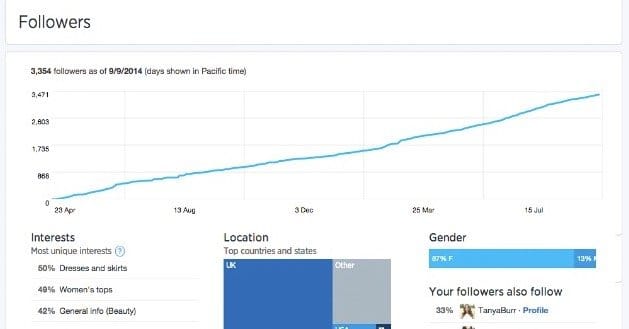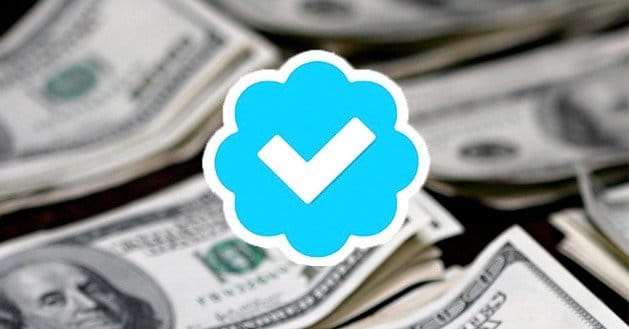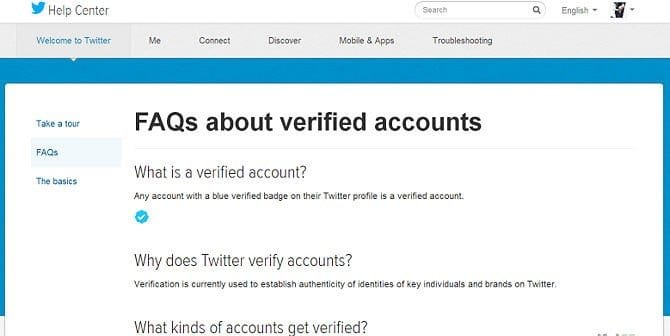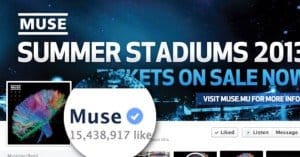 Written by ContentPowered.com
Written by ContentPowered.com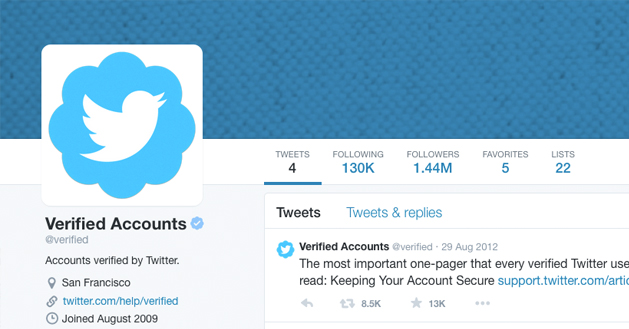
Twitter verification is the process that gets you that coveted blue checkmark next to your username on your Twitter profile and on all of your tweets. It’s pretty valuable, though a large portion of that value comes simply from how coveted it is. Twitter has been incredibly close-mouthed about how to get verified and what factors effect eligibility. The best we can do is analyze who has been verified and who hasn’t and extrapolate from there.
Rather than talk about how to get verified, however, I’d like to take a moment and discuss the benefits of getting verified. After all, why would you want to waste time working to get verified if it’s not going to help you in any tangible way? On the other hand, if it’s completely worth it, you may want to spend more time pursuing it.
Analytics Access
Here’s something interesting; verified users have access to Twitter Analytics. Now, anyone can get access to Twitter analytics through the normal channels, but that involves becoming an advertiser. In order to be eligible to be an advertiser, you need to be in specific locations where Twitter allows advertising. Certain countries aren’t eligible, for example. You can see the latest requirements for Twitter verified accounts here. Your account also needs to be fairly active; you can’t sign up and become an advertiser within a day, or even a week.
Twitter ads don’t support protected tweets, so if your tweets are protected, you’ll have to remove that protection in order to be eligible for ads. You also can’t run ads if your account has been deactivated or suspended, obviously enough.
A Sign of Trust
The main benefit of verification, of course, is the trust it comes with. When you’re verified, it’s Twitter saying “yes, this account is who it claims to be.” This is very important when it’s incredibly easy to create an account with a minor typo or additional word in the URL, use the same display name and picture as another entity, and go on posing as that entity.
You see a lot of parody accounts on Twitter doing exactly this. There’s the infamous FoodNetwerk, the UnitedAirlanes airline parody, as well as various plays on celebrity names. Many celebs have usernames like @therealfirstname because their full name was taken or they didn’t like it. That alone isn’t a sign of trust, though, because other entities with their real names as usernames might have imposters using therealname usernames. It goes both ways.
Verification is a way for a user to quickly and immediately identify when a message posted or shared is coming from a real business or celebrity, as opposed to an imposter. This is important, because imposters can hurt the reputation of a business.
Theft Protection
Not all imposter accounts are parodies. Often times, people will create imposter accounts with the sole purpose of attracting the fans of the business or celebrity, only to message them later or direct them to a website that will steal their information. It’s a form of phishing and impersonation that is extremely damaging to both the business and to Twitter, for allowing it to happen.
Verification isn’t a perfect solution to this problem. After all, you have to be verified to get that mark of trust, and not every business can be verified. This occasionally comes back to hurt small businesses, whose more savvy audience members might not trust because of their lack of verification.
Then again, on the flip side, if verification worked all the time, imposters wouldn’t be successful. Even verified businesses get imposters that successfully scam users, because users, as a whole, aren’t very intelligent. They might not know or they might not care what that blue check mark means, and so they never realize they’re giving their information to an imposter.
Verification is also incredibly important for customer outreach. If you, as a business, want to tweet at someone directly to solve a customer service problem, you almost have to be verified. No savvy user is going to give an ounce of personal information to an account that doesn’t have a verification check, regardless of how trustworthy they look. I do have to specify savvy users, of course; many less intelligent users do much less intelligent things every day.
Losing Verification
Verification is not a permanent effect, either. If you change your username, you lose verification. If you protect tweets, you lose verification. If you break the Twitter terms of service, you can also lose verification, depending on the severity of the infraction. This helps maintain trust in the verified badge.
The Verification Process
So what exactly happens when you’re invited to be verified?
The first thing that happens is you receive a tweet from the @verified account. This is an official Twitter account that handles all verification information. It will send you a link, which can be used from mobile or desktop Twitter, prompting you for some information.
Before you can put in any information, Twitter gives you a little crash course in being a better tweeter. It’s an amusing little test, and it’s easy to pass, particularly if you’ve been using the site at all.
At this point, they ask you for your phone number. They use this as a direct line for security, in case of an issue with your account or an account being compromised. That is, surprisingly enough, all the ask for when you’re verified. Once you’re done with the process, you’re good to go.
So How Do You Attract the Verification Fairy?
You don’t, really. If you’re actively seeking verification, you’re going to have a harder time getting it. Just be a good tweeter and, well, be in one of the appropriate industries. Much like Facebook, Twitter only verifies users in certain industries, mostly those with high risk, high profile accounts. These, specifically, are music, acting, fashion, government and political roles, religion, journalism, media, sports, and business accounts. It’s broader than Facebook, but still excludes many thousands of users.
